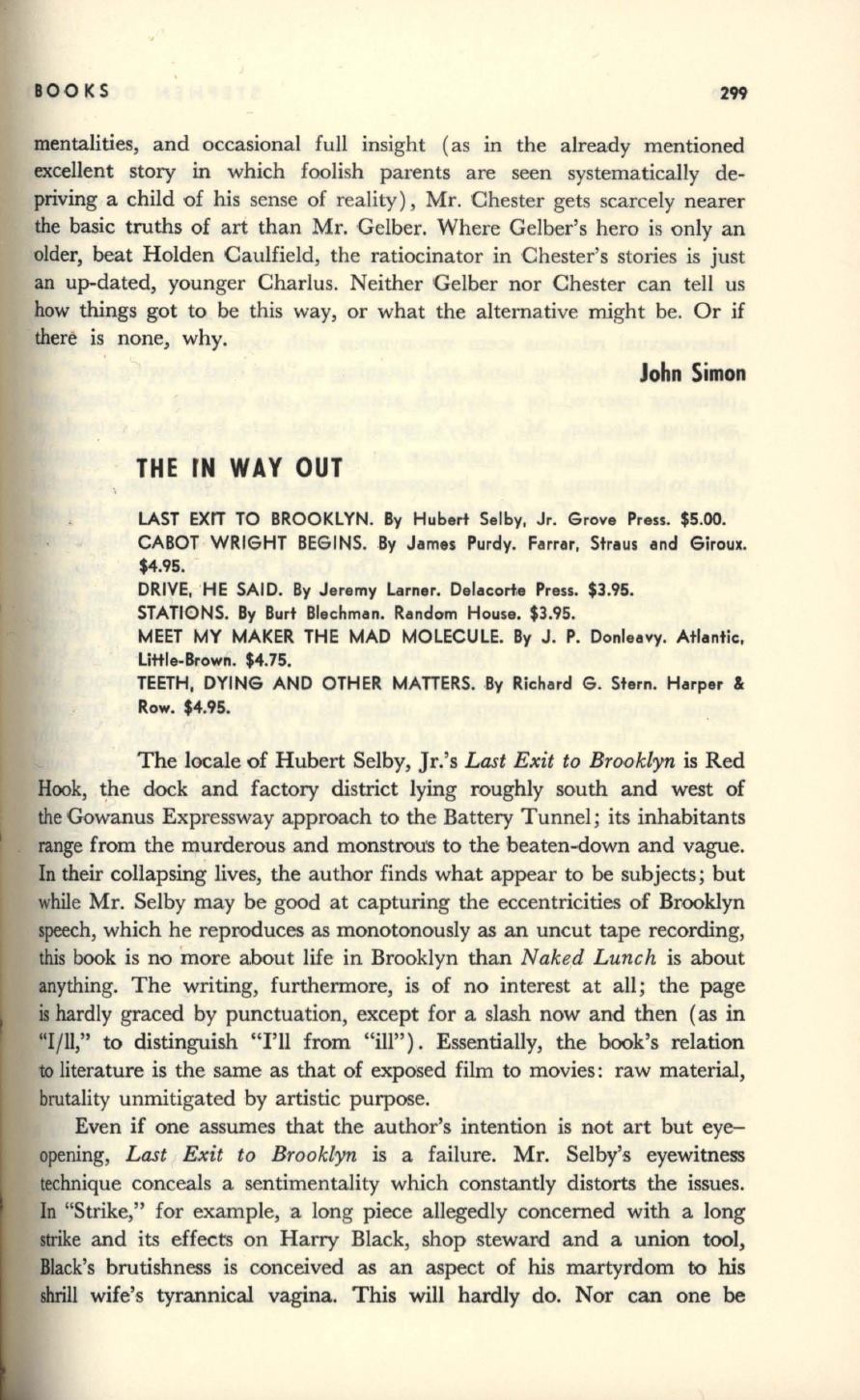
BOOKS
299
mentalities, and occasional fuJI insight (as in the already mentioned
excellent story
in
which foolish parents are seen systematically de–
priving a child of his sense of reality), Mr. Chester gets scarcely nearer
the basic truths of art than Mr. Gelber. Where Gelber's hero is only an
older, beat Holden Caulfield, the ratiocinator in Chester's stories is just
an
up-dated, younger Charlus. Neither Gelber nor Chester can tell us
how things got to be this way, or what the alternative might be. Or if
there is none, why.
John Simon
THE IN WAY OUT
LAST EXIT TO BROOKLYN. By Hubert Selby, Jr. Grove Press. $5.00.
CABOT WRIGHT BEGINS. By James Purdy. Farrar, Straus and Giroux.
$4.95.
DRIVE, 'HE SAID. By Jeremy Larner. Delacort,e Press. $3.95.
STATI0NS. By Burt Blechman. Random House. $3.95.
MEET MY MAKER THE MAD MOLECULE. By J. P. Donleavy. Atlantic,
Little-Brown. $4.75.
TEETH, DYING AND OTHER MAnERS. .By Richard G. Stern. Harper
&:
Row. $4.95.
The locale of Hubert Selby, Jr.'s
Last Exit to Brooklyn
is Red
Hook,
~he
dock and factory district lying roughly south and west of
the Gowanus Expressway approach to the Battery Tunnel; its inhabitants
range from the murderous and
monstrou~
to the beaten-down and vague.
In their collapsing lives, the author finds what appear to be subjects; but
while Mr. Selby may be good at capturing the eccentricities of Brooklyn
speech, which he reproduces as monotonously as an uncut tape recording,
this
book is no more about life in Brooklyn than
Naked Lunch
is about
anything. The writing, furthermore, is of no interest at all; the page
is
hardly graced by punctuation, except for a slash now and then (as
in
"1/11," t.o distinguish "I'll fr.om
"ill").
Essentially, the book's relati.on
to
literature is the same as that .of exposed film to movies: raw material,
brutality unmitigated by artistic purpose.
Even if one assumes that the author's intention is net art but eye–
opening,
Last Exit to Brooklyn
is a failure. Mr. Selby's eyewitness
technique c.onceals a sentimentality which constantly distorts the issues.
In "Strike," fer example, a long piece allegedly concerned with a long
strike and its effects on Harry Black, shop steward and a union tool,
Black's brutishness is conceived as an aspect of his martyrdom to his
shrill wife's tyrannical vagina. This will hardly d.o. Nor can .one
be


